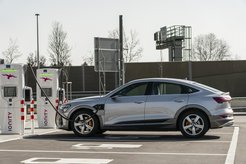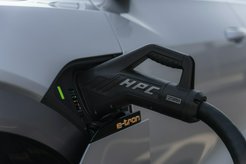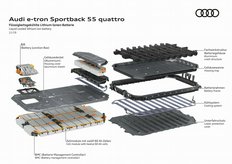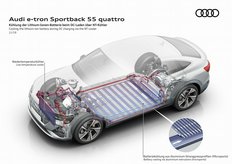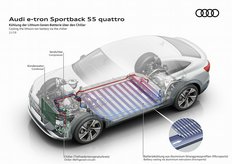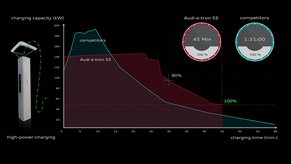It's in the Thermals: Audi Explains High Charging Performance of Its e-tron Models
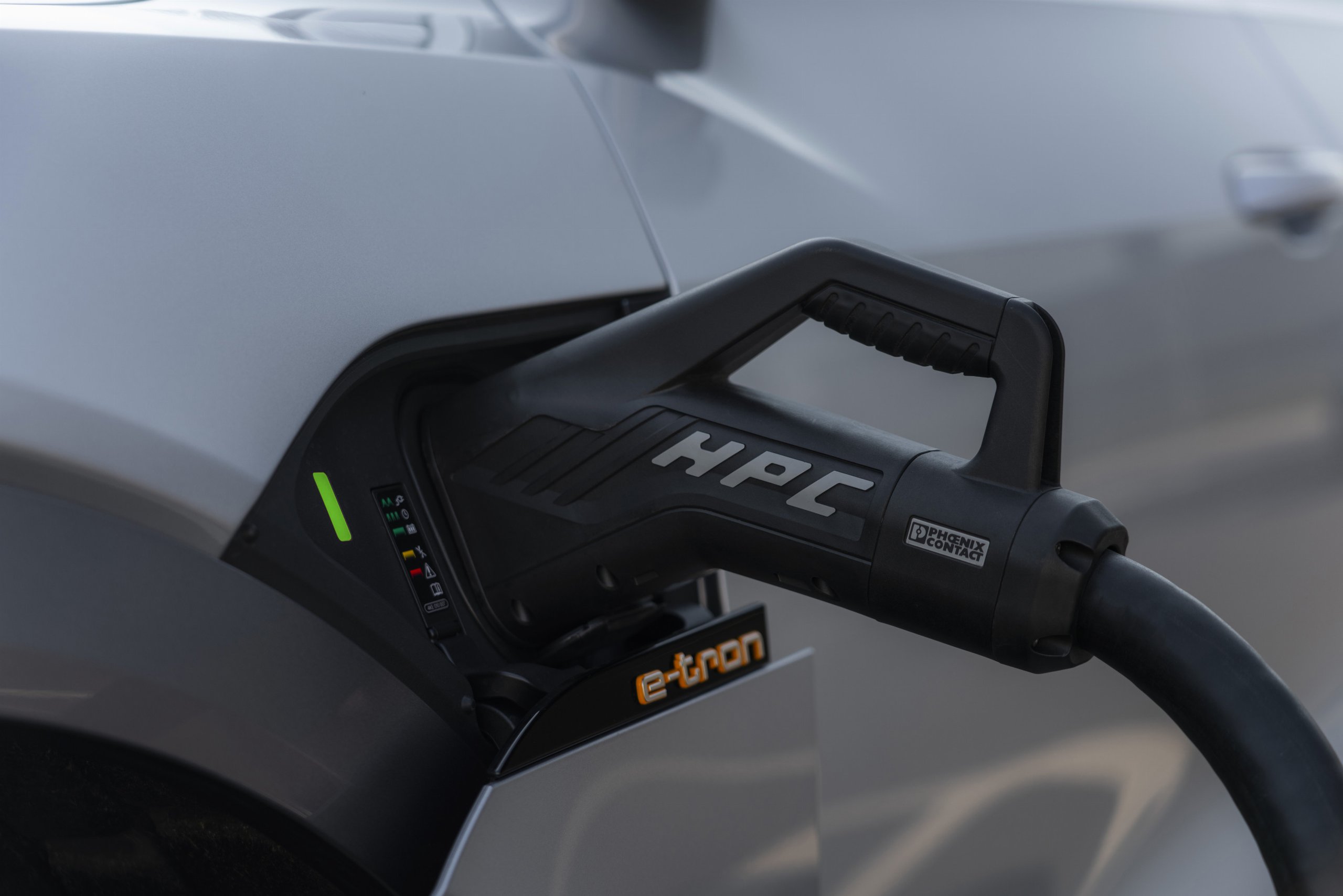
Audi explains that its e-tron models are capable of high charging speeds because the charging capacity of up to 150 kW is available for a large portion of the charging procedure, thanks to sophisticated thermal management of the lithium-ion battery pack. This characteristic, Audi argues, makes the battery capacity of Audi e-tron vehicles more accessible.
A Flatter Charging Curve
When charged at a High Power Charging (HPC) fast charger with 150 kW output, the Audi e-tron 55 is able to maintain the threshold of maximum output between 5% and 70% charged before the intelligent battery management reduces the current.

Audi e-tron 55 enjoys a flatter charging curve than many competitors
Compared to offerings from some competitors that only reach the "peak" output briefly, the Audi e-tron manages to charge consistently faster. For example, a range of around 110 km can be charged in under 10 minutes at an HPC terminal; the e-tron 55 reaches the 80% mark after approximately 30 minutes and 100% at around 45 minutes.
While this ability may not come into play for at-home or at-office charging, it can be valuable for long trips.

The e-tron 55 can be charged with both AC- and DC-charging
Thanks to Sophisticated Thermal Management
Audi e-tron 55 has a gross battery capacity of 95 kWh (net 86.5 kWh) with long lifecycle. To sustain high charging speed while maintaining durability, the vehicle employs an elaborate thermal management system:

Audi has endowed e-tron a sophisticated thermal management system
Liquid cooling ensures that the battery's temperature remains in the optimum range of 25 to 35 degrees Celsius, even at high stress levels or low temperatures. In total, 22 litres of coolant circulates in 40 meters of cooling lines along four coolant circuits.

The battery system in the e-tron
The core of the cooling system is made of extruded profiles affixed to the battery system from below: a thermally-conductive adhesive joins the cooling unit to the battery housing. The gap filler forms the contact between the battery housing and the battery cells within. This filler is a gel that is also thermally-conductive. The physical separation of the coolant from the battery cells as a result increases the system's overall safety. Additionally, this design provides a solid structure that mitigates damage in the event of a crash.
Article Gallery
